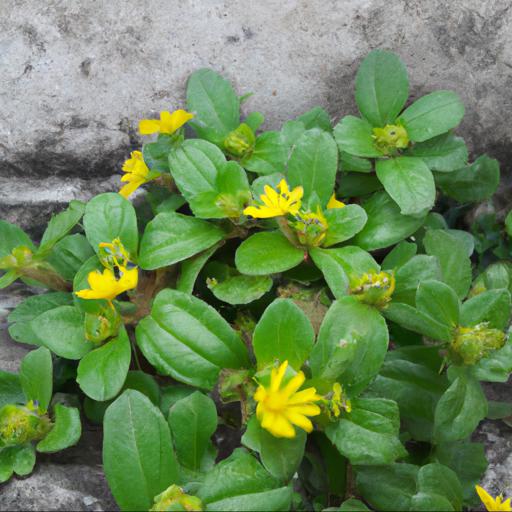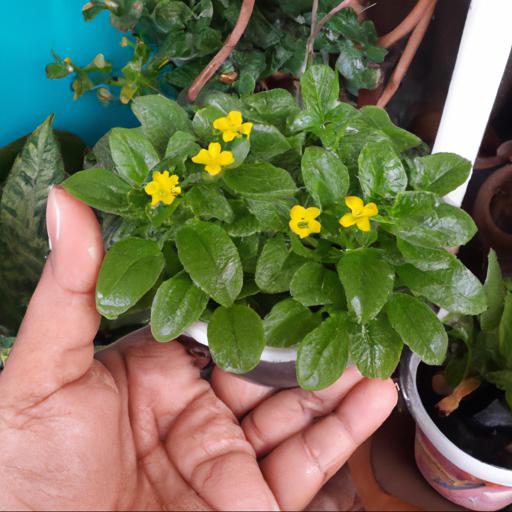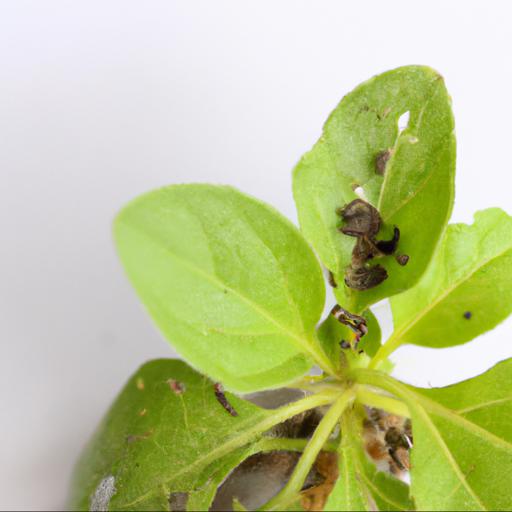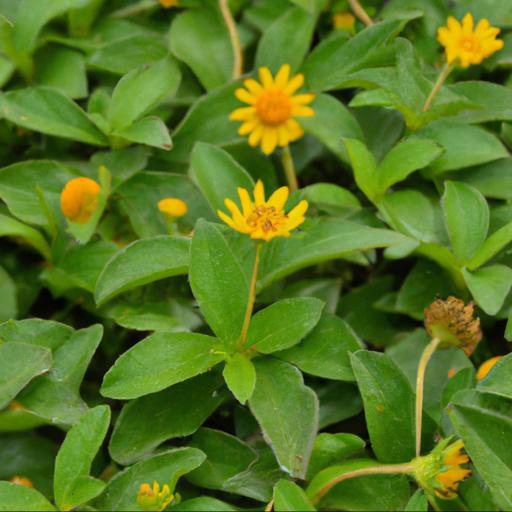Sanvitalia procumbens, commonly known as creeping zinnia, is an annual flowering plant native to Mexico and Central America. It is a low-growing, spreading plant with bright yellow daisy-like flowers. It is an easy-to-grow plant that can be used as a groundcover, in containers, or as an edging plant.
Sanvitalia procumbens is a great choice for adding color to gardens and landscapes. It is tolerant of poor soils and requires little maintenance.
It blooms from late spring to early fall and is attractive to butterflies and other pollinators. This drought-tolerant plant is an excellent choice for xeriscaping and other low-water gardens.
Benefits of growing sanvitalia procumbens

Sanvitalia procumbens or dwarf zinnia is a low, mounding annual plant native to Mexico and Guatemala. The plant is often used in gardens and landscapes as a ground cover or edging plant, due to its ease of growth and spreading tendency. This beautiful, drought-tolerant plant creates a brilliant blanket of color that supports native birds and beneficial insects, making it an excellent addition to any garden.
Sanvitalia procumbens offers a wide variety of benefits for gardeners. The foliage is attractive and inviting with its glossy, deep green color and profuse daisy-like yellow flowers blooming from summer through autumn.
Its trailing vines, which grow one to two feet in height, make it a great choice for edging or in containers. Its shallow roots make it easy to incorporate into gardens without disturbing other plants’ root systems.
Besides its beauty, the plant is quite hardy and relatively low-maintenance. Sanvitalia procumbens has a strong tolerance to drought, making it one of the easiest plants to keep alive during periods of low rainfall. It is also disease-tolerant and can tolerate temperatures as low as 0 degrees Fahrenheit.
This plant is salt-tolerant as well, which makes it a great choice for coastal gardens. Best of all, it’s an amazing pollinator and can attract a variety of beneficial insects like bees and butterflies—all of which add life and vibrancy to any garden.
With its easy maintenance, a wide array of benefits, and vibrant colors, Sanvitalia procumbens is the perfect addition to any garden. Whether you’re growing it as a ground cover, accent plant, edger, or container plant, you will love the eye-catching burst of yellow blooms in your landscape. Despite its delicate-looking appearance, this hearty annual can bring life, beauty, and vibrancy to your garden for years to come.
How to plant and care for sanvitalia procumbens

Sanvitalia procumbens, commonly known as creeping zinnia or golden carpet, is a widely cultivated ornamental flowering plant. It is an easy care, heat- and drought-tolerant groundcover that makes a perfect addition to any garden. With its bright golden-yellow daisy-like flowers and foliage that arranges itself in lovely cascading mats, it is no wonder that sanvitalia procumbens has become a popular choice among gardeners.
When planting sanvitalia procumbens, it is best planted in the spring or summer months when the temperature is warm. It thrives best in full sunlight and well-draining soil.
Mulching is also recommended to aid in regulating the soil temperature and moisture, as well as providing nourishment over time. Watering should be done every two to three days until the roots are established.
Overwatering should be avoided to prevent root rot. Sanvitalia procumbens does not require a lot of maintenance to look its best. Pruning should be done to encourage further growth, or if plants begin to crowd each other, as it is important to keep the foliage aerated.
Pests such as aphids, whiteflies, and spider mites should be watched for and treated with insecticide if needed. Fertilizing should be done two to three times a year to promote optimum growth. Sanvitalia procumbens is a great choice for an attractive groundcover as well as a hardy, low-care solution to any garden.
With its cheerful flowers, vibrant foliage, and multiple uses, sanvitalia procumbens will liven up any landscape and be a delightful asset to owners and passersby alike.
Common pests and diseases of sanvitalia procumbens

Sanvitalia procumbens, or the common creeping zinnia, is a species of flower native to Mexico, Texas and Arizona in the United States. It’s a perennial plant with prostrate, herbaceous stems and bright yellow flowers featuring reflexed ray petals in it’s center. It’s a highly attractive ground cover for gardens, due to its ability to bloom all summer long and tolerate a variety of soil and climates.
Unfortunately, as attractive as sanvitalia procumbens can be, gardeners should be aware of the presence of pests and diseases which can affect the plants. Aphids are small, gray insects which feed off of the sap of sanvitalia procumbens.
They can land on the leaves and suck out the juice, damaging the flower growth and draining its energy. As they can reproduce quickly, nearby plants should be monitored and treated with an insecticide if they’re present.
Mildews and rusts can also be a problem for sanvitalia procumbens. These fungi generally develop under damp, warm conditions, and can survive in the soil for extended periods of time. When present, the plants will display yellow spots on the leaves, accompanied by a layer of white or yellowish dust on the plants’ surface.
To combat this, it’s important to use fungicides during times of dampness and wetness. If the plants are infected, it’s best to remove them from the garden to reduce the risk of further infection.
Overall, Sanvitalia procumbens can be a real charm in any garden, provided the gardener takes the proper steps to ensure their flower’s health. Knowing the risks associated with the aformentioned pests and diseases, and taking precautionary measures such as using insecticides and fungicides, can go a long way in maintaining a well-kept, beautiful garden.
Tips for growing sanvitalia procumbens successfully
As a UK gardener, you know the importance of adding a splash of colour and texture to your garden. Sanvitalia procumbens, otherwise known as creeping zinnia, is an excellent option when it comes to bringing vibrancy and life to any garden. With its beautiful, bright yellow flowers and its compact growth habit, it is the perfect addition to the landscape.
Here are some tips to make sure your Sanvitalia procumbens is thriving:For optimal growth, Sanvitalia procumbens needs a lot of light. Place it in a sunny spot in your garden, ideally somewhere that gets at least six hours of sun each day.
This heat-loving zinnia will also appreciate well-draining soil, so make sure that you provide it with the ample drainage it requires. As an added bonus, Sanvitalia procumbens is drought-tolerant, so you need not worry about frequent watering. Regular pruning and deadheading will keep your Sanvitalia procumbens looking neat and tidy.
When it comes to fertilising, choose a fertiliser with a neutral, balanced formulation and spread it evenly over the soil. Use an organic mulch such as compost or leaf litter to help conserve moisture and nutrients between feeds.
Finally, be aware of potential pests like aphids and whiteflies, which may find their way onto your Sanvitalia procumbens. Keep an eye out for these pests, and use insecticide sprays to keep them at bay.
Regularly check your zinnia plants for any signs of infestation and take appropriate action. With the right care and attention, your Sanvitalia procumbens will bring years of vibrant colour and life to your garden.
Our video recommendation
Conclusion
Sanvitalia procumbens, commonly known as creeping zinnia, is a species of flowering plant in the daisy family. It is native to Mexico, Central America, and the Caribbean.
This low-growing, mat-forming plant has bright yellow flowers with red centers and is an excellent choice for borders, rock gardens, and containers. Sanvitalia procumbens is easy to grow and is tolerant of both heat and drought. It is an excellent choice for those looking for a low-maintenance, long-blooming flower.
FAQ
What are the common names for Sanvitalia procumbens?
Common names for Sanvitalia procumbens include creeping zinnia, trailing zinnia, and Mexican creeping zinnia.
What are the benefits of growing Sanvitalia procumbens?
The benefits of growing Sanvitalia procumbens include its ability to attract pollinators such as bees and butterflies, its tolerance of drought and poor soil conditions, its ability to spread quickly and form a dense ground cover, and its attractive yellow flowers.
What is the ideal climate for Sanvitalia procumbens?
The ideal climate for Sanvitalia procumbens is warm, sunny, and dry, with temperatures between 65-85°F (18-30°C).
How often should Sanvitalia procumbens be watered?
Sanvitalia procumbens should be watered once every week or two, depending on the soil and weather conditions.
What pests and diseases affect Sanvitalia procumbens?
Common pests and diseases that affect Sanvitalia procumbens include aphids, spider mites, powdery mildew, and root rot.
How can Sanvitalia procumbens be propagated?
Sanvitalia procumbens can be propagated by seed, stem cuttings, or division.

